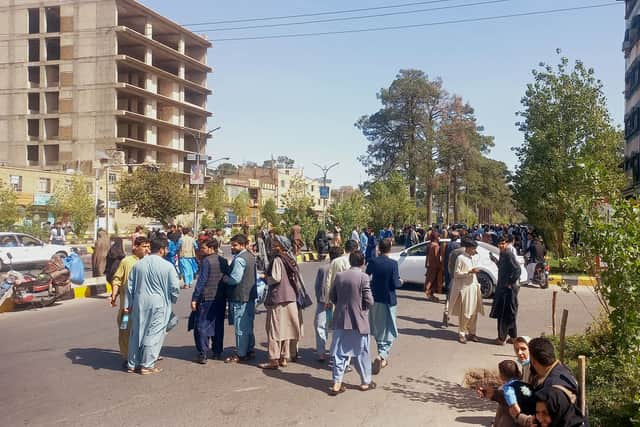Afghanistan earthquake: over 2,000 dead and thousands injured in 6.3 quakes near western city Herat
and live on Freeview channel 276
More than 2,000 people have died and thousands more injured after earthquakes struck Afghanistan, the Taliban administration has said.
The ministry of disasters reported that 2,053 had been killed and a further 9,240 injured after a pair of 6.3-magnitude quakes hit around 40km from the western city of Herat on Saturday (7 October).
Advertisement
Hide AdAdvertisement
Hide AdThe earthquake, which happened around 11am local time (6:30pm GMT) destroyed more than 1,300 buildings, trapping people under rubble. This is a significant jump from the UN's preliminary figure of 320.


At least three powerful tremors followed the initial earthquake. The epicentre was about 25 miles northwest of the city and was followed by a 5.5-magnitude aftershock, the United States Geological Survey (USGS) reported.
"We were in our offices and suddenly the building started shaking. Wall plasters started to fall down and the walls got cracks, some walls and parts of the building collapsed." Herat resident Bashir Ahmad told the AFP news agency.
"I am not able to contact my family, network connections are disconnected. I am too worried and scared, it was horrifying," he added.
Advertisement
Hide AdAdvertisement
Hide AdA health official said more than 70 injured people were being treated at the city's main hospital.
Resident Abdul Shakor Samadi said: "Me and my family were inside our home, I felt the quake," adding that his relatives began shouting and ran outside and are now afraid to return.
"All people are out of their homes. Houses, offices and shops are all empty and there are fears of more earthquakes."
Herat is located 120km east of the border with Iran and is considered to be the cultural capital of Afghanistan. An estimated 1.9 million people are believed to be living in the province, according to 2019 World Bank data.
The country is frequently hit by earthquakes - especially in the Hindu Kush mountain range as it lies near the junction of the Eurasian and Indian tectonic plates.
Comment Guidelines
National World encourages reader discussion on our stories. User feedback, insights and back-and-forth exchanges add a rich layer of context to reporting. Please review our Community Guidelines before commenting.
